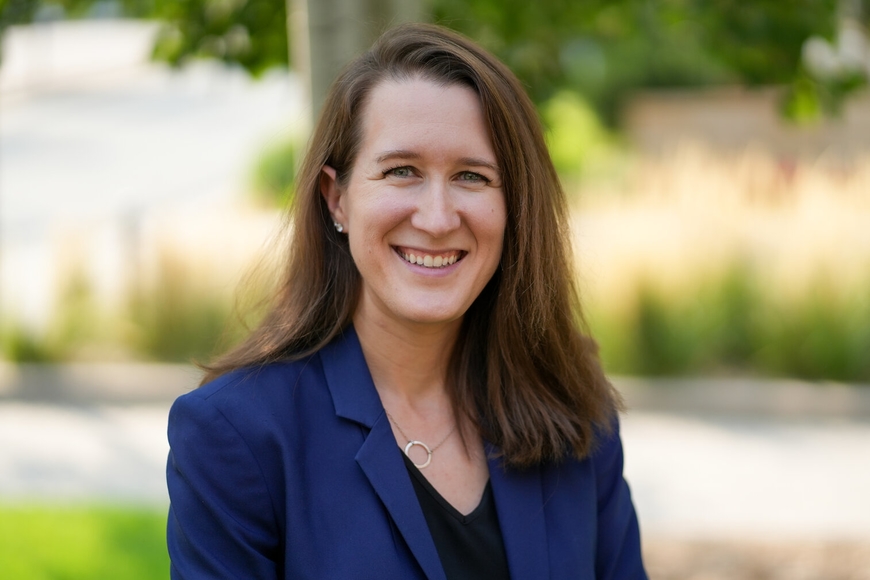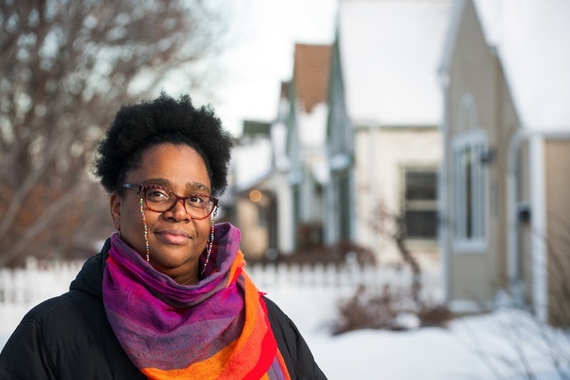Dr. Allison Steinke: Social Problems and Social Justice in Strategic Communications
“There’s always something new to learn and master!” Allison Steinke (PhD ‘22) is a new teaching assistant professor in the Hubbard School of Journalism & Mass Communication. Specializing in a variety of topics such as digital media, solutions journalism, and social justice, she shares her work in the classroom as well as her research on media coverage of social problems.
What role(s) do you have at the University of Minnesota? What brought you here?
I am a teaching assistant professor at the Hubbard School of Journalism & Mass Communication. I accepted my job offer and started teaching full time as soon as I completed my PhD in mass communication at the Hubbard School in May 2022.
Before completing my PhD, I received my master’s degree in journalism from Northwestern University’s Medill School and a bachelor’s degree in communication (media studies) from Wheaton College in Wheaton, Illinois. I worked in magazine editing and publishing for several years before coming back to school for my PhD in 2017. I’m still able to consult as time allows, and I feel like I’ve landed my dream job!
What are your areas of specialty?
I often tell people that I specialize in solutions, social and digital media, and innovation. These topics are a combination of my academic, professional, and pedagogical pursuits and interests.
As a professor, I enjoy teaching on topics including social media, digital media, gaming, and content production—blogging, podcasting, video editing, and producing data visually in the form of infographics. I love teaching on these topics as the industry is always changing, and there’s always something new to learn or master! I minored in sociology during my PhD program and have a basic certificate in equity and diversity from the UMN Office for Equity and Diversity, and I am always looking for ways to integrate elements of diversity, equity, and inclusion into my teaching and research.
As a researcher during my PhD program here at the U, I received a Doctoral Dissertation Fellowship from the University of Minnesota Graduate School in addition to the Ralph D. Casey Dissertation Award at the Hubbard School for my dissertation, “The Institutionalization of Solutions Journalism.” These awards allowed me to develop a robust dissertation that highlights journalists’ and practitioners’ work in 17 countries worldwide in solutions journalism.
Solutions journalism is defined, in short, as rigorous reporting on responses to social problems like human trafficking, homelessness, the climate crisis, and other systemic injustices. I employed institutional theory in my dissertation work, and I still enjoy leveraging that theory to investigate the rules, norms, and values of various institutions and how those elements contribute to the legitimacy and credibility of brands and organizations in an increasingly diversified information economy.
I’m also an active member of the International Communication Association (ICA), Association for Education in Journalism and Mass Communication (AEJMC), Public Relations Society of America (PRSA), and eSports Research Network. Membership in these societies are great for me as an extrovert to be inspired to pursue new research ideas and to maintain a solid professional network!
How did you become interested in what you study and teach?
Dr. Valérie Bélair-Gagnon served as my primary PhD adviser during my PhD program. Valérie introduced me to the field of media sociology and inspired me to be the scholar and professor I am today. Dr. Matthew Weber served as my PhD co-adviser, and he helped me learn to appreciate and apply institutional theory in the study of networks. Thanks to Valérie and Matt’s introductions to these concepts and to many leading scholars in these fields, I became passionate about studying journalism, innovation, institutions, and organizations.
I’ve always been passionate about social justice, too—especially anti-human trafficking initiatives—and one of my dissertation committee members, Dr. Elizabeth Heger-Boyle, helped me to better understand the complex relationships between law, human trafficking, and sociology. My dissertation chair, Dr. Matt Carlson, encouraged me to weave all these threads together into one cohesive dissertation project on solutions journalism.
I’m so grateful for the many mentors and scholars who helped me through my doctoral program and continue to inspire me today. I am in the process of continuing to research solutions, innovation, and institutions, and I’ve had some meetings with colleagues recently about concepts that relate to branding and brand thinking. We are working on some articles on those topics, so stay tuned for more news on that front!
I never would have come to the U for my PhD if it weren’t for my youngest sister, Jennifer (Althoff) Hempel, who graduated from the Hubbard School in 2016 with a bachelor’s degree in strategic communication. She brought me to visit class with her one day where I met her professor, Dr. Brendan Watson, who encouraged me to pursue a PhD at the University of Minnesota, so I did! I was initially interested in journalistic coverage of human trafficking. After I completed a couple of conference presentations and peer-reviewed journal articles on human trafficking and social justice, I expanded my research agenda to evaluate how journalists cover solutions to a myriad of social problems including homelessness, poverty, human trafficking, the climate crisis, health inequities, and more—an approach called solutions journalism.
What courses are you currently teaching or looking forward to teaching soon?
In fall 2022, I taught 461 students in three Hubbard School courses: JOUR 4243: Digital Content and Production for Brand Communications; JOUR 1501: Digital Games and Society; and JOUR 3751: Digital Media and Culture.
Coming up in spring 2023, I will teach JOUR 4590: Social Media Management, the Hubbard School’s first context course dedicated solely to social media; JOUR 4243: Digital Content and Production for Brand Communications; JOUR 3751: Digital Media and Culture; and a JOUR 4999: Capstone course. I taught a May-term version of JOUR 4590: Social Media Management in 2022, and am thrilled to be able to teach its first full semester course in spring 2023! There are always new social media tools, analytics, and strategies to learn about and practice, and it’s a privilege to teach and learn from students with regard to stewarding those tools for organizations in a responsible way.
All of the courses I teach are always changing as new innovations and technologies come into being. For example, I helped manage a user experience (UX) project for a website with the UMN Department of Sociology a couple of years ago. UX is a field with lots of overlap with brand communication, and it’s been exciting integrating some of those UX and customer experience principles into the courses I teach.
What are some of the takeaways students will get from your courses?
I encourage all of my students to think about how the knowledge they are gathering in their courses can apply to their lives outside of the classroom. Practical application of knowledge results in wisdom, which I hope to cultivate in all of my students across disciplines!
What are you most excited about right now?
In addition to teaching and research, I serve as faculty adviser for HSJMC’s Public Relations Student Society of America (PRSSA) chapter. It has been awesome to meet with and encourage students interested in the public relations field–a challenging and rewarding area that is always changing and evolving. We have had a great year so far with lots of growth, and we are currently in the process of scheduling some agency tours, thinking about establishing a PR mentorship program, and have a few student teams entering in the national PRSSA Bateman Competition.
In addition to research, teaching, and service, I’m able to consult on editorial, multimedia, and research projects for various organizations. I wrote a series of alumni profiles for Wheaton College and edited a 40th anniversary book for Anselm House in 2022, and I write and publish a blog called “A Daily Miracle” that documents my journey through breast cancer. My twin sister, Stephanie, and I were both diagnosed with breast cancer in 2019 within three weeks of each other—we were both 30 years old, so it was a bit of a shock! But this blog has been a way for me to reach thousands of people diagnosed with or caring for those with breast cancer. It has been an amazing and encouraging way for me to share our journey and also connect with those impacted by cancer.
Are you involved with any community-engaged projects/courses? Who are you partnering with and what are you learning and doing?
During my PhD program, I worked as a graduate research assistant for the Public Life Project housed within the University of Minnesota’s College of Liberal Arts. I wrote an article and co-produced a series of vignettes titled “Public Life Starts Here,” a series that highlights UMN’s thought leadership on topics of division, equity, and diversity in partnership with Twin Cities Public Television (PBS). I utilize this content in the courses that I teach now and spread the word about the Public Life Project events and community engagements that occur throughout the year.



